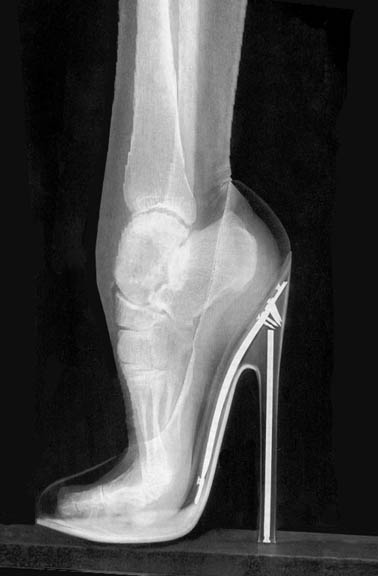← Neck Problems Olympic Athletes Use Chiropractic →
High Heels
July 25, 2016

Research suggests that 59% of women wear high-heeled shoes for between one to eight hours per day. It may not be surprising then that shoes with an increased heel height have been linked to low back pain.
When you wear high heels, most of your weight is supported by the ball of your foot. That part of your foot, unfortunately, wasn’t meant to do the kind of heavy lifting your heel is designed for. To compensate for the high heel, you end up adjusting your posture, which is detrimental to your long-term spinal health.
Your back’s normal s-curve acts as a shock absorber, reducing stress on the vertebrae. Wearing heels causes low-back spine flattening and a backward displacement of the head and spine.
In addition, the hip flexor muscles (in the upper front part of your thighs) have to work much longer and harder to help you walk due to the downward position of your feet. If you habitually overuse hip flexor muscles, the muscles can get shorter and a contracture can occur. This can also cause your spine to flatten.
Excessive high heel use will cause your calf muscles to permanently shorten and tighten. This will cause pain in other places, such as the ball of your foot, knees, hip or back.
Tips to a healthy back
• Minimise the length of time you spend wearing heels in general
• Try not to stand for too long at any one time in high heels
• When sitting, remove your shoes and stretch out your feet
• Carry flat shoes with you in your bag, so you can swap shoes when walking long distances
• Remove your shoes when in the house and wear flat slippers
• Avoid open back or slide-on shoes that require toe gripping. This can result in hammer toes and foot tension.
• While the ideal height is no heel, a two-inch heel will cause less pain or damage than higher ones.
• Regularly visit a Chiropractor
This entry was posted in
General. Bookmark the
permalink.
← Neck Problems Olympic Athletes Use Chiropractic →


Leave a Reply
You must be logged in to post a comment.